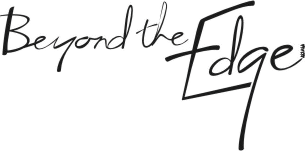Book Review: ‘The Element’ by Sir Ken Robinson
Heather Davis and I got together and wrote this book review of The Element: how finding your passion changes everything by Sir Ken Robinson, with Lou Aronica, 2009. New York, Viking. USD $17.

This book was mentioned in and follows on from Sir Ken Robinson’s 2006 TED Talk “Do schools kill creativity?” which made a profoundly moving case for creating an education system that nurtures—rather than undermines—creativity. That presentation was subsequently viewed by tens of thousands of people. This book has been written in the same anecdotal style that Robinson used in his TED Talk which, transferred to the written word, is eminently readable as an extended essay. It will be of interest to people who have been shaped by schooling, particularly those for whom traditional schooling in subjects such as english, science and maths was less than ideal; as well as today’s parents, students, teachers and teacher educators.
Like Erica McWilliam’s “The Creative Workforce” (2008) Robinson’s book positions creativity as a key literacy for the knowledge era and argues for an urgent change to education practices rather than more of the same education and training practices that are failing many students (and educators):
Some of the most brilliant, creative people I know did not do well at school. Many of them didn’t really discover what they could do—and who they really were—until they’d left school and recovered from their education (p. 9).
Robinson tackles this issue by focussing on what he calls “the element” that “place where the things you love to do and the things that you are good at come together” and describes how people, himself included, have discovered their ‘element’.
The book details the common traits of the phenomenon he calls “the element” which include:
- passion for our own distinctive talent (whatever that might be);
- a means to show that talent off;
- support and space for developing this talent (including, mentors; a place to practice and make mistakes; and an education system that looks to the individual)
- connecting with others who share the same passions, ie finding your tribei;
- the role of attitude and luck;
- evidence that opportunities to discover our “Element” exist more frequently in our lives than many might believe, and that it may never be too late to get started.
Robinson argues that our education system works against most people finding their element and is passionate and persuasive in his calls for educational reform. This really is the core of the book, with the examples and anecdotes serving as evidence of the failure of the current system. He also explores the place of creativity, and the arts, in an educational hierarchy which, generally, places sciences at the top and the arts as a poorer second. Even within the arts, he argues, there are still hierarchies. This embedded structure in education mitigates the capacity for many of us to use our formal education as a means of exploration where we can try out many, and eventually discover, our own true ‘element’. Robinson is particularly critical of standardised tests – a ‘one size fits all’ model of most Western societies, that purports to measure like against like when every human individual is unique. This book sits nicely with Malcolm Gladwell’s latest, “Outliers” (2008) where Gladwell argues in a similar vein that success is due, mostly, from luck, circumstance and openness to new ideas.
If there is any lack to Robinson’s book it is in the area of ‘how to’. There is little practical advice, although lots of tangental clues, as to how to discover your own ‘element’. The reader hoping for more precise instructions will be disappointed. However, anyone who has any responsibility for education – their own or of others – would be well advised to read this book and incorporate its learnings into their own practice.
Chapters include: the Element; think differently; beyond imagining; in the zone; finding your tribe; what will they think?; Do you feel lucky?; somebody help me; is it too late; for love or money; making the grade; and a thought provoking afterword.
References
Gladwell, M. 2008. Outliers: The story of success. London, Penguin.
McWilliam, E. 2008. The creative workforce: how to launch young people into high-flying futures. Sydney, University of New South Wales Press.
[i] Interesting that there is a chapter on Tribes but no mention of Seth Godin’s book of the same name. Perhaps they were writing in parallel?

Hi, I am so glad I finally located other ‘fans’ of Sir Ken Robinson and his ideas. I used to be a machine operator in the engineering industry the in north of England. That was 25 years ago. Since that time, I have been to university, got two degrees to help me teach my language, and have taught English in 7 different countries. I have two books published, had a plethora of other stuff published, and a ton of writing unpublished or on blogs. At school, my ability to write was encouraged, but of course, coming from a working class family, i had to get an apprenticeship – writing had to wait. Think how fortunate I am to find myself ‘in the zone’, doing what I love – writing.
Sir Ken is absolutely right about education – we need to throw out the Gradgrind model and infuse our youngsters with our own enthusiasm.
Many, many thanks
Sincerely
Rob Fielding